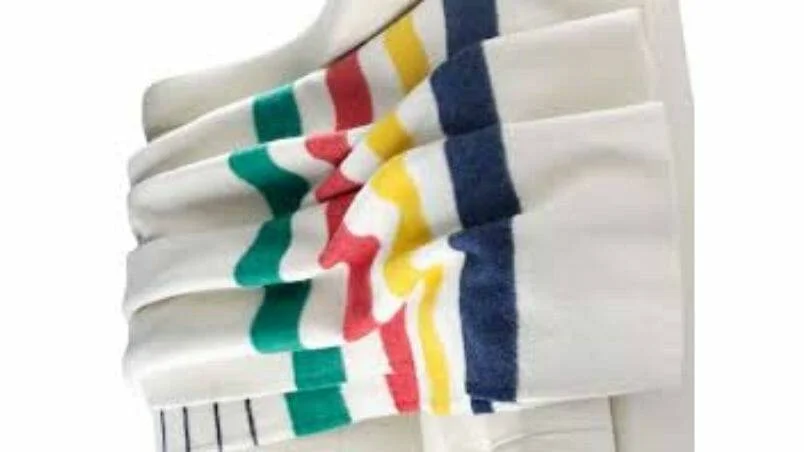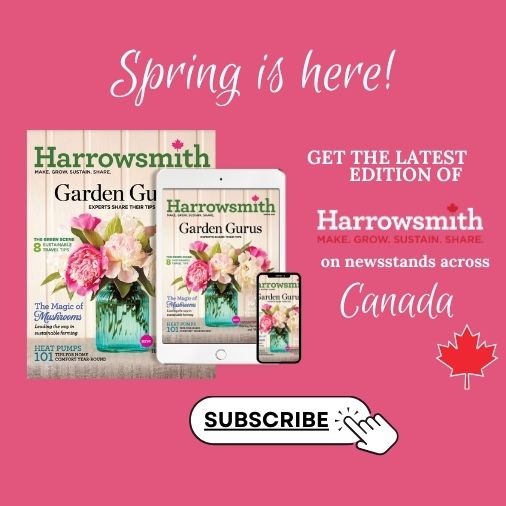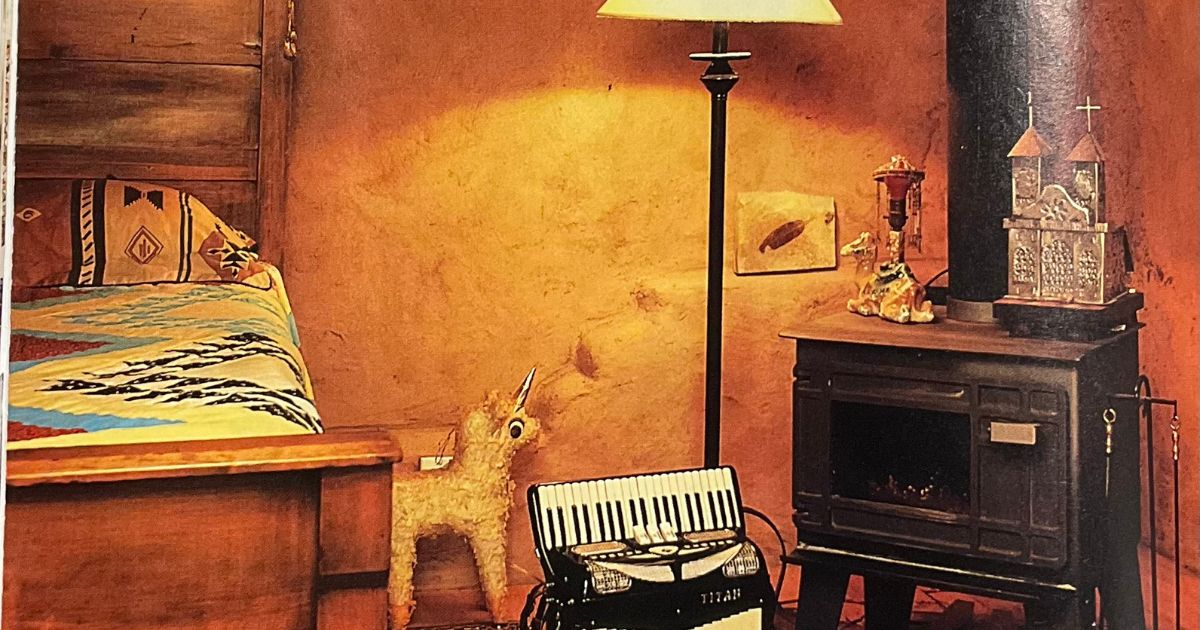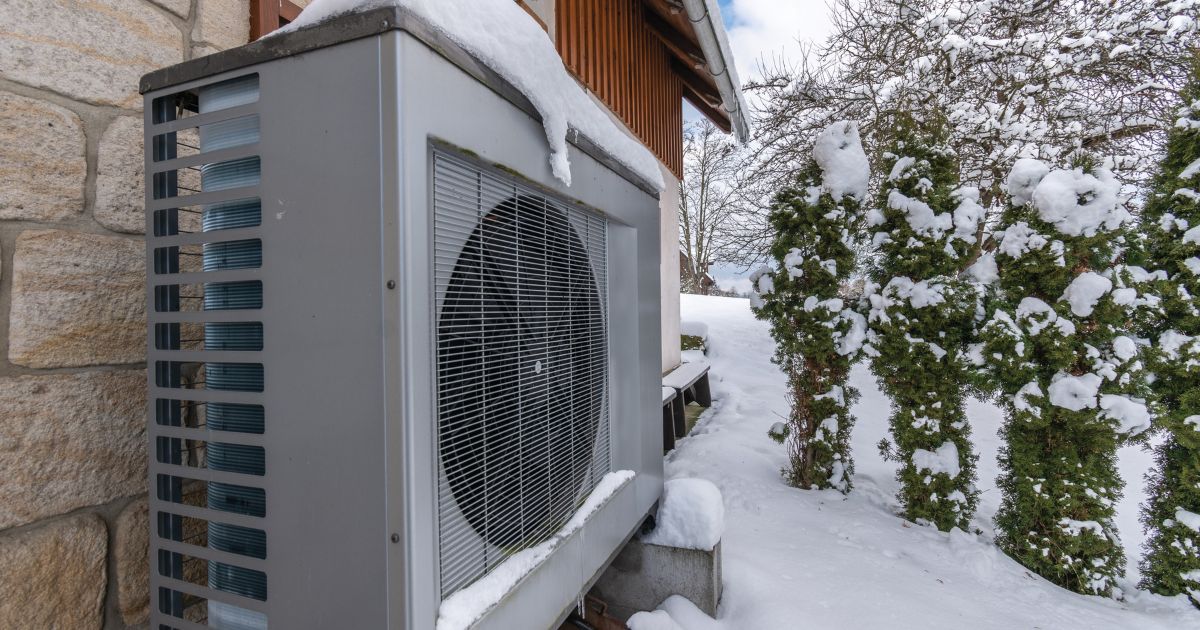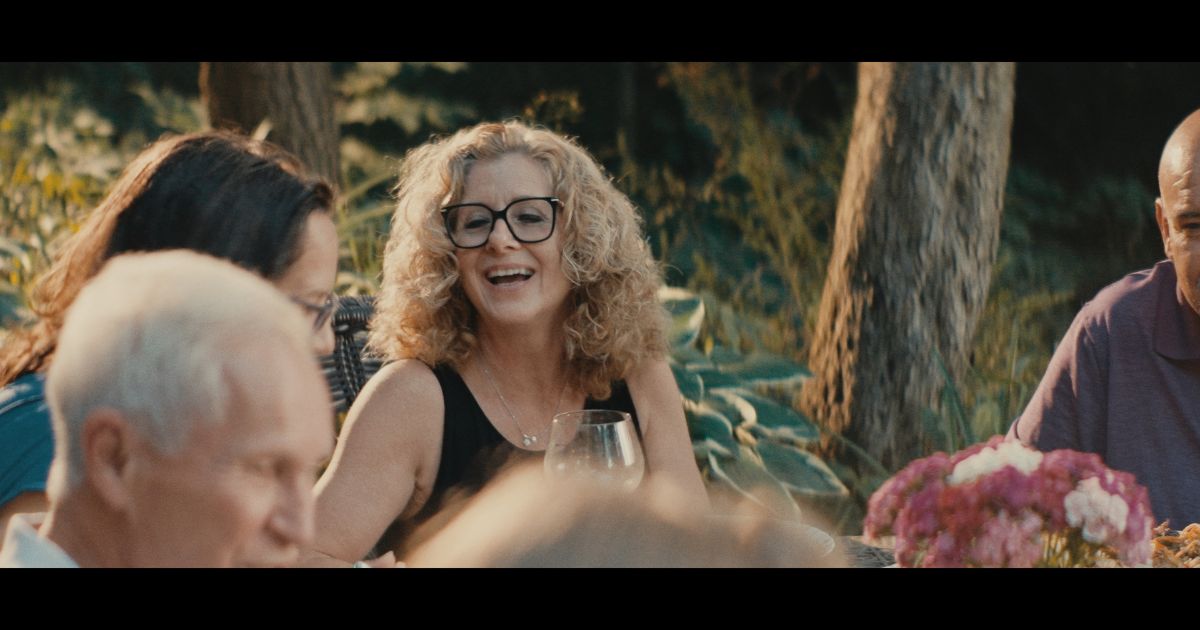The Hudson’s Bay Company (HBC) point blanket has been such a fixture in Canadian homes, cottages, lodges and cabins through the centuries, it’s easy to think of it as just … a blanket.
But what product can you name that has been manufactured for over 400 years? And what could be a more truly Canadian wedding, anniversary or housewarming gift than a HBC point blanket?
The origins of the iconic blanket began with fur trading in the New World. In 1670, King Charles II of England granted a charter to form the Hudson’s Bay Company, which in short order controlled vast tracts of wilderness and the fur trade in North America.

The most popular items exchanged for beaver and other animal pelts were wool blankets. In fact, blankets comprised 70 percent of traded goods. These blankets were especially popular with Indigenous people, as they were much easier to sew than animal skins and much quicker to dry. Often, the blankets were made into coats, called capotes, popular with Indigenous and non-Indigenous trappers, hunters, voyageurs and explorers. They were described as follows:
“The Métis man’s winter attire was the capote; a thigh length coat with full length sleeves which could come with or without a hood or cape. Most had small shoulder decorations made of red stroud [a type of wool]. To keep the coat closed there were both thongs and buttons or a sash.” Fromm “Métis Culture: A Pictorial Essay on the Métis Capote” by Laurence J. Barkwell
Showing their true stripes
While HBC exchanged blankets for furs as far back as the 1600s, the first record of a striped blanket is from a 1779 order sent to the textile mill of Thomas Empson in Oxfordshire, England:
“30 pair(s) of 3 points to be striped with four colours (red, blue, green, yellow) according to your judgment.”
This describes the traditional HBC point blanket—still popular today—of white wool with bold-coloured stripes. Green, red, yellow and blue were popular colours and easily produced using colourfast dyes.
The Point System
The short (about 10 cm/four inches in length), thin black stripes woven into the selvage edge of HBC point blankets tell another story. There is a misconception going back to fur-trading days that the number of stripes indicated the value of the fur pelts traded; in fact, these shorter stripes were added to make it easy to tell the blanket’s size when folded.
The term point comes from the French word empointer (“to make threaded stitches on cloth”). A full point measured 10 to 14 cm (four to 5 1/2 inches), while a half point measured half that length. The smallest blanket was a one-point blanket, measuring 0.8 by 2.5 metres(two feet eight inches by eight feet)long. The most common sizes during the fur trade era were 2.5, 3, 3.5 and 4 points, while HBC Point blankets today are available in sizes that correspond with modern mattress sizes.
Modern HBC point sizes
3.5 (twin)
4 (double)
6 (queen)
8 (king)
While white with wide stripes of green, red, yellow and blue is the most recognized HBC point blanket style, appearing on everything from keychains to $7,500 custom canoes, point blankets are also available in solid red, green and charcoal. In the late 1920s, a number of pastel shades were introduced (only to be discontinued by the 1960s), including sky blue, violet, reseda (green), gold and rose.
In 2000, an HBC Millennium point blanket, with stripes of taupe and brown on a white background, was introduced to complement the more neutral tones of modern decor. Other special edition blankets include the 2006 Think Pink! point blanket created in support of the Canadian Breast Cancer Foundation (pink stripe on white), and a 2010 Vancouver Olympics point blanket with stripes in shades of blue and green.
HBC point blankets are still made in England, under the John Atkinson name, a sub-brand of the A.W. Hainsworth Company in Yorkshire. This company is famous for high-quality wool products, including billiards and piano key felt, and for providing cloth for royalty and the military. Both Prince William and Prince Harry wore uniforms made from A.W. Hainsworth cloth at the 2011 wedding of William and Kate Middleton.
Prices range from $250 (twin) to $600 (king) for an HBC point blanket. You could also splurge on the luxurious Scottish-made cashmere throw at $1,195.
Satisfied customers
Customer satisfaction appears to go back centuries. One happy customer (a prospector who used his HBC point blanket at times to pan for gold) reported the following:
“I have in my possession one of a pair of blankets which I purchased in your store 30 years ago this month … packed north and all through the mountains and received some of the roughest usage that any fabric could possibly survive. I could not truthfully estimate how many tons of river gravel was dumped onto it and washed in our attempts to find gold.”
From several sources, yours truly read about an HBC point blanket that was used in a Canadian home for over 50 years after being salvaged from a wreck on Lake Superior. That is quite a legacy!
In these days of global markets, there are endless patterns and colours and much cheaper blankets you can buy, but in my opinion, HBC point blankets are worth the heavy price tag. If you are considering purchasing one of these blankets for yourself or as a gift, remember the high price is offset by the fact that the blanket you buy can last 50 or even 100 years. It will be enjoyed again and again as it is passed from generation to generation. If you already own an old HBC point blanket, perhaps you will look at it differently, knowing more about its rich history.

Fun Facts
- Your passed-down-through generations HBC point blanket could be worth thousands of dollars. Value is determined by age, size, colour, pattern rarity and condition.
- HBC point blankets were used in 1928 and 1934 for Admiral Richard E. Byrd’s expeditions to the Antarctic.
- In the 1930s, Col. Charles Lindbergh and his wife, Anne, wore point blanket coats on their flight to Europe by way of Greenland and Iceland.
- The Beaver was founded in 1920 to celebrate HBC’s 250th anniversary. Essentially an in-house newsletter, it expanded to become a highly respected Canadian history periodical now known as Canada’s History.
- The original 1670 HBC royal charter, handwritten on five pages of vellum (sheepskin) parchment with elaborate calligraphy, still exists and remains the legal, founding document of the Hudson’s Bay Company. These days, it is housed in the Toronto head office.
- Hudson’s Bay Company retail stores were for many years known as The Bay. In 2013, the company rebranded, embracing its four-century heritage with the name Hudson’s Bay and a new logo. HBC has expanded into the U.S., controlling Saks Fifth Avenue and Lord & Taylor stores. At the time of writing, this author noted the Lord & Taylor website has posted that they are sold out of HBC point blankets.
Madeleine Hague has had a connection to Harrowsmith for over 25 years. A longtime urban dweller, she moved to the country in 2012. Between April and October, Madeleine and hubby Mike are kept busy with a wildflower garden, bees and tending their potatoes, garlic, lettuce, beets, kale, tomatoes, sunflowers, pumpkins, squash, peppers and beans. Madeleine has also been our Small Ponds people finder for the past 11 years and acts as a Recipe Ranger, helping readers find recipes from back issues. She lives in North Halton, Ontario.

